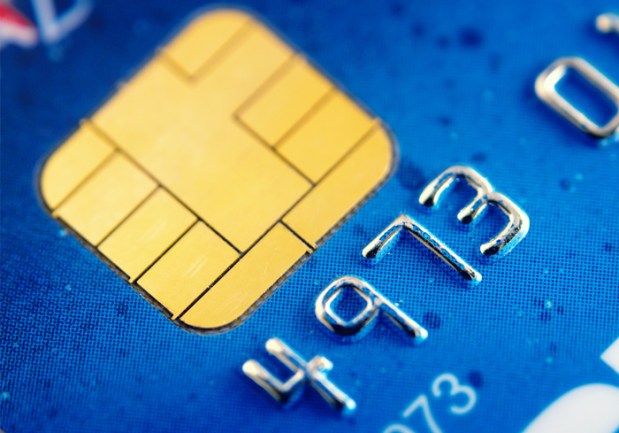The Road To EMV In The U.S. – Experts Sound Off

There are few subjects that highlight the chasm of opinions between payments players quite like EMV. That EMV is coming: of that there can be no doubt. In a little more than a year, merchants will either have to have to upgrade their terminals to EMV or risk being liable in the event of POS fraud.
Whether this is a good thing is another issue. Among EMV fans, the opinion is that EMV is a time-tested, secure and non-invasive way to make sure customer data is safe at the point-of-sale. This important because it both actually protects card transactions and helps consumers feel secure in those transactions.
Among EMV’s detractors, the prevailing opinion is that EMV is the best payment security the 1990’s had to offer, which is problematic since it is almost 2015. According to critics, EMV goes to the American market as an anachronism, trying to protect cards when the payments ecosystem is evolving towards mobile.
“There is still a lot of confusion in the market concerning what EMV can and cannot do. EMV cuts card present –fraud, but a sharp jump in card-not-present fraud could make up for the security gains,“ MPD CEO Karen Webster noted while moderating PYMNTS’ Retail Reinvention Week’s panel of EMV experts: Gemalto’s VP of Business Development Philippe Benitez, Global EMV Consultant and manager at DataCard Dave Ewald and CTO/CSO at Creditcall, Jeremy Gumbley.
What all three of the panelists noted was that right now in 2014 going into 2015, EMV makes the most sense when one considers that the the technology it secures – the payment card – and the type of transaction it secures – the card present in-store – are still far and away the most common type of transaction.
“We have to look at what EMV was designed to solve. One was to protect against card present fraud. The number of cards in our wallet has not gone down. Where businesses are personalizing cards, we don’t see card usage going down,” noted Ewald.
The EMV solution, Ewald notes, also makes it easier for American consumers to move about the globe—a card picked up in Colorado will work just as well in Johannesburg as it will in Jersey.
Moreover, unlike the emerging mobile solutions on the market today—Apple Pay most notably, but also perhaps less beloved players like Softcard (formerly ISIS) – EMV is resting on a known commodity that is not going anywhere in the forseeable future.
“Our credit cards, which are part of our daily routine, are getting chip and contactless enabled. I think mobile and EMV and mobile NFC based transactions will live together in the same ecosystem. I see both technologies coexisting in relative harmony in the near future. The best of both worlds. We may find Apple Pay is a screaming success, but we would still continue to use cards because that’s what we are used to,” noted Gumbley.
Cards are a real and healthy part of the ecosystem, and in a post-Black Swan-world where Target was shockingly breached, and then it seems every other retailer followed suit, plastic cards are also a point that needs to be protected. What makes EMV a strong player, noted Gumbley, is that it can provide for that security and is well suited to play in an expanding sandbox of payment methods
“EMV is a mature technology. In the world of transactions, security is not a bad thing. EMV, while little being long in game, has stood the test of time. As for everything else, EMV provides a fantastic framework for evolution.”
Benitez concurred, noting that EMV’s duration on the market meant that it has, in fact, been updated for authorization, security and different transaction methods. Moreover, EMV and NFC are increasingly likely to live together in a POS, making the upgrade a sort of two for one for merchants interested in both upgrading to be able to take EMV and a system like Apple Pay.
“In Leander, Texas, I was able to use my EMV card,” Benitez noted. “There are EMV terminals being deployed all around U.S.. I read about 80 percent VeriFone terminals are contactless enabled. They can decide to turn on the feature.”
Apple Pay (and like NFC systems) and EMV have a great opportunity to be mutually supportive – if EMV can really get strong merchant adoption. Merchants have a significant inducement in the form a liability shift in the even of a data breach that will go into effect for retailers who have not upgraded by 2015, but that inducement is outweighed by bother the monetary costs of making the upgrade and the time costs of retraining staff to us it.
Still the panel was positive on EMV’s adoption, which the majority forecasting that by the time of the liability shift deadline, over 50 percent of retailers will have switched over to EMV.
“The great thing about the U.S. starting late is that we can take all the learning of countries migrating elsewhere,” Gumbly noted. Anybody integrating payments can be present. Our tier II merchants will also be able to upgrade their solution. Tier I merchants’ like Wal-Mart have already upgraded.”
It will probably be a learning experience for all parties involved. Retailers will have to change how they deal with payment and customers will have to get used to “dipping” instead of swiping (and may even have to remember a PIN someday). But it is a tech, according to the Retail Reinvention Webinar, that could both save merchants money in fraud losses and help them bridge the divide between what’s now in payments and what’s next in payments.
